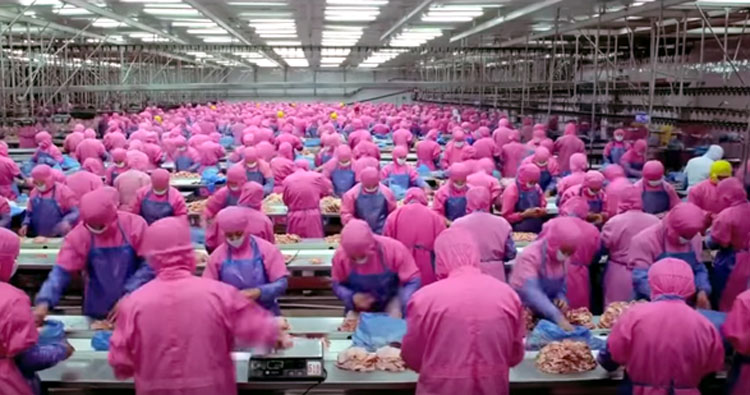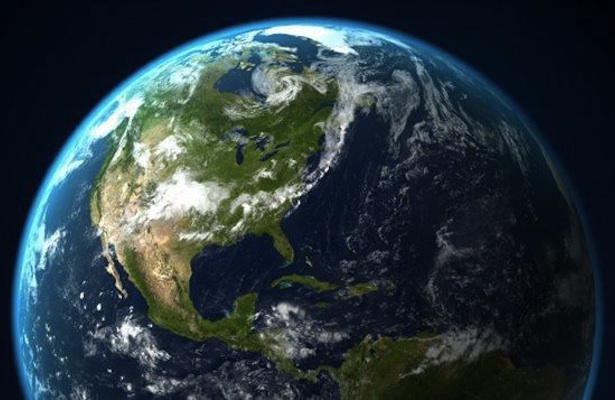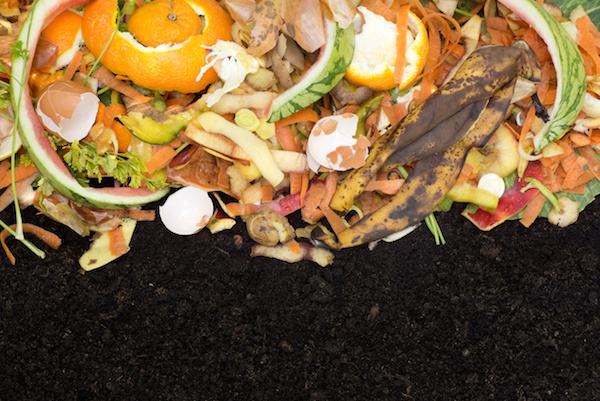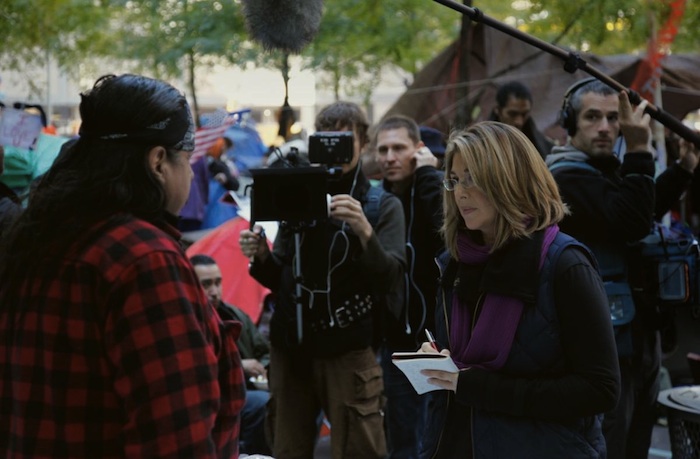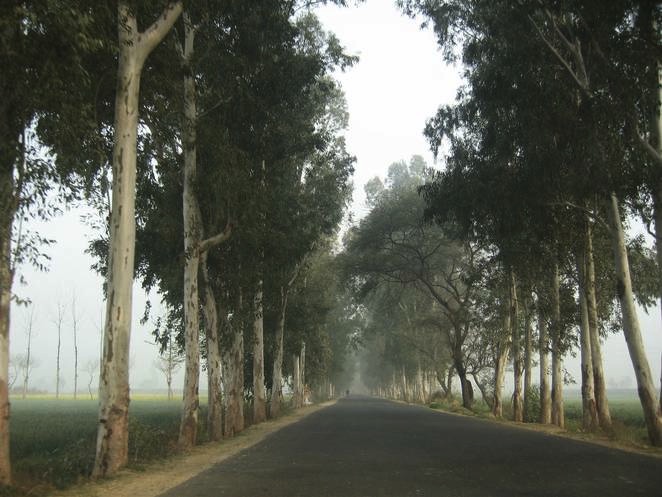Oscar-winning actor Leonardo DiCaprio has advocated for a number of worthy causes, from fighting climate change to the importance of conservation. Now, with a single tweet, the planetary steward shines a light on the colossal environmental impact of animal agriculture.
Continue reading... →Lots of us have had a moment—a revelation, observation, or interaction—when climate change became more than a concept. What’s yours? By Liz Pleasant The other night, I was sitting in bed scrolling through Twitter when I saw the headline: “Report: Global temperature hike already halfway to ‘two degree warming’ limit.” I clicked it. The writer of the article, Brandon Miller, explained why many scientists agree that two degrees of warming is the cutoff point for “controllable” climate change, and how new reports show we’re already halfway there. On top of that, we just experienced the warmest October since observations began in 1879, and October was the sixth consecutive month to break a global temperature record. Seven of the 10 warmest months ever recorded happened in 2015. Talking about climate change isn’t new for me. I work at YES! Magazine, where we cover climate issues all the time. I read pitches on sea-level rise and sort through headlines on droughts, storms, and a fragile food system pretty much every day. But for some reason, this report really stuck with me. It scared me. I was still thinking about it the next morning while discussing coverage of the Paris climate talks with other […]
Continue reading... →We can eliminate the use of fossil fuels completely and quickly, if countries can just find the political will. In a few decades, the world could be powered by nothing but wind, water, and sunlight. That’s the conclusion of a new study released just before world leaders meeting in Paris to strike a climate deal. “These are basically plans showing it’s technically and economically feasible to change the energy infrastructure of all of these different countries,” says Mark Z. Jacobson, director of the Atmosphere/Energy Program at Stanford University, who worked with University of California colleagues to analyze energy roadmaps for 139 countries. The researchers crunched numbers to see how much energy each country would need by 2050—including electricity, transportation, heating and cooling, industry, and agriculture—and then calculated how renewable energy could cover those needs, where it could go, and how much it would cost. People who are trying to prevent this change would argue that it’s too expensive, or there’s just not enough power, or they try to say that it’s unreliable, that it will take too much land area or resources,” Jacobson says. “What this shows is that all these claims are mythical.” Renewable energy is already cheap and […]
Continue reading... →Climate change action can feel so overwhelming, especially when we hear news of natural disasters, politicians who don’t believe in global warming, and companies who keep putting their money into dirty energy. So you might conclude that your voice doesn’t really matter at all in the grand scheme of global climate action. Let me convince you otherwise. I recently met with legendary feminist Eva Cox and discussed why the global environmental movement is facing so many challenges. For her, the key issues were these: We’re too negative. Many environmental activists and organizations focus too strongly on the threats and issues associated with climate change, such as natural disasters and spiraling pollution. This negative information has the effect of scaring people off: they’d rather ignore the issue than address it because it just seems all too hard. Instead, activists need to show the community that climate action has positive effects that help everyone. This uplifting message is much more likely to make people want to do something, rather than just stick their head in the sand. We’re not connecting the dots. It’s easy to pretend that climate change exists in isolation, but in reality it is connected to politics, society, employment, […]
Continue reading... →East Coast business uses clean technology to take food waste out of landfills and put it into your garden. Imagine a big composting machine that processes food waste by the ton. It’s not only bigger than the compost heap you have stirring in your backyard; it’s faster, too. That’s the idea behind Converted Organics’ high-temperature liquid composting technology. The Boston-based company takes food waste from grocery stores, restaurants, and processing facilities around Boston, New York and New Jersey and turns it into an eco-friendly fertilizer that gardeners can use in their backyards. Unlike your backyard compost pile, where dairy and meat products are a big no-no, Converted Organics accepts all types of food waste, including fruits, vegetables, and meats. “Meats have high nitrogen compounds from additional protein,” says Rob Bayless, the company’s vice president of manufacturing, explaining why taboo compost additives are a key ingredient to the Converted Organics mix. Contrary to backyard composting methods, they then liquefy the food waste. This not only breaks down the material to keep it from producing that nasty odor associated with decomposing garbage, it allows oxygen to more easily enter the mix, explains Bayless. Air is inserted into the liquefied food waste, making […]
Continue reading... →The rest of the world should plant more trees too India’s Rural Development Ministry has decided to try to tackle two problems at the same time: Youth unemployment and bad air quality. It has unveiled a plan to hire youths – potentially up to 300,000 – to plant 2 billion trees along the country’s highways. “The length of National Highways in the country is one lakh kilometer [about 62,137 miles]. I have asked officials to come out with a plan to plant 200 crore [2 billion] trees along these stretches which in turn would create jobs for the unemployed on the one hand and protect the environment on the other,” said Shipping and Rural Development Minister Nitin Jairam Gadkari. Not only would this help provide jobs to a segment of the population that needs them and make the country more beautiful, but trees are also great at improving air quality. India tends to have big problems with that, as does much of Asia and the Middle-East: A recent study shows that tree leaves can capture a substantial amount of particulate pollution. The research was conducted in the UK; The scientists started by measuring how much air pollution go into a […]
Continue reading... →516 ARTS in Albuquerque, NM, is organizing a collaborative season of public programming in the fall of 2015 that explores climate change through the arts to create a platform for education and dialogue. The public programs for HABITAT: Exploring Climate Change Through the Arts will include: a series of exhibitions at 516 ARTS; the popular Downtown Block Party; special events with guest speakers; film screenings; and youth programs. Climate change is an urgent issue of both global and local concern. The Southwest can be considered one of the most “climate-challenged” regions of North America, with rising annual temperature averages, declining water supplies, and reduced agricultural yields. In New Mexico we’ve already seen destabilized and unpredictable weather patterns, water sources going dry, forests not recovering from fire, loss of urban trees, and crop failures. Public programs for HABITAT strive to raise awareness about these issues by taking an innovative approach to engaging with social and environmental change, and by bringing the community together to focus on sustainability. 516 ARTS will present a series of speakers to address the issues around climate change from both the science and art perspectives. Speakers include renowned artist Mel Chin, who is currently working on a project about […]
Continue reading... →